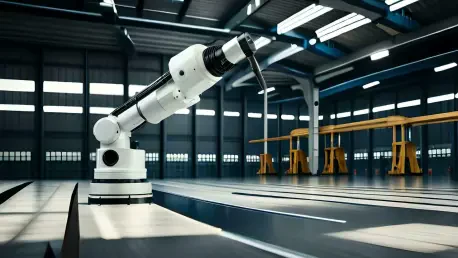In the ever-evolving landscape of industrial automation, the role of organizations like the Association for Advancing Automation (A3) is pivotal. Rohit Laila, a seasoned expert in the logistics industry with a keen focus on technology and innovation, shares his insights on recent trends in the robotics sector. With data indicating shifts in robot sales, the impact of collaborative robots, and the resilience of automation investments, Laila discusses these developments and their implications for various industries.
Can you explain what the Association for Advancing Automation (A3) is and its role in the robotics industry?
A3 is a prominent organization in the field of industrial automation. It plays a crucial role in promoting the growth and integration of automation technologies across industries. By providing critical data, standards, and education to its members, A3 supports the innovation and implementation of robotics and automation, making them accessible and beneficial for manufacturers, integrators, and suppliers.
What does the recent data from A3 reveal about the sales of robots in North America during the first quarter of 2025 compared to Q1 2024?
The data reveals that the number of robots ordered in Q1 2025 was almost the same as in Q1 2024, with a slight increase of 0.4%. However, there’s a significant uptick in the total value of these orders, which rose by 15%. This suggests that companies are investing more in sophisticated and higher-end robotic systems rather than just increasing the volume of robots purchased.
How did the total value of robot orders change from Q1 2024 to Q1 2025, and what might be contributing to this increase?
The total value of robot orders increased by 15%, reflecting a shift toward more advanced and expensive robotic systems. Companies are likely prioritizing investments in technology that offers greater efficiency, precision, and adaptability to meet complex industrial needs. This can be attributed to the demand for innovation that supports varied, high-performance applications across sectors.
Could you elaborate on the trends seen in the automotive sector regarding robot orders, both from OEMs and parts suppliers?
The automotive sector showed contrasting trends. Orders from automotive OEMs surged by 42% in units and 78% in revenue, suggesting a robust investment in automation to enhance production capabilities. However, orders from automotive parts suppliers decreased by 29%. This may be driven by OEMs focusing directly on integrating robots rather than relying on automated components from suppliers.
What factors might be driving the significant increase in orders from automotive OEMs?
There is a strong push within OEMs to increase manufacturing efficiency and adapt to evolving automotive technologies, such as electric vehicles. This push necessitates innovative automated systems that can handle complex, flexible manufacturing processes, prompting increased investments in robotics.
Why do you think orders from automotive parts suppliers have decreased?
The decline in orders from parts suppliers could be indicative of cost constraints or shifts in focus toward other strategic areas. Alternatively, it might suggest that OEMs are assuming more in-house automation responsibilities, reducing their dependency on externally supplied components.
What does Alex Shikany mean by saying automation investment is resilient, especially in the auto industry?
Shikany is highlighting the robustness of automation investments, which remain strong despite economic uncertainties. The automotive sector, in particular, continues to see significant investment in robotics, underscoring the necessity of automation for maintaining competitiveness and innovation in a challenging market.
How are broader economic uncertainties affecting sectors like food, semiconductors, and metals in terms of automation investment?
Economic uncertainties are causing these sectors to adopt a more cautious stance on automation investments. Sectors like food and metals may prioritize stability and cost-efficiency, potentially slowing down the pace of new automation projects, while continuing to leverage existing technologies to streamline operations.
Why did A3 decide to start tracking collaborative robots (cobots) in its official reports?
A3 began tracking cobots due to their growing popularity and distinct advantages over traditional robots. Including cobots in reports provides insights into how these flexible, human-friendly robots are shaping automation strategies. Tracking their usage helps stakeholders make well-informed decisions regarding integration and technology investments.
What distinguishes cobots from traditional robots?
Cobots are designed to work alongside human operators, offering flexibility and ease of use. Unlike traditional robots that often require caging and predefined programming, cobots can be reconfigured easily and interact safely with humans, making them suitable for diverse applications.
In which industries are cobots in higher demand, and why might that be the case?
Industries like life sciences and food see higher demand for cobots, largely due to their need for adaptable, safe automation solutions. Cobots can efficiently handle varied tasks, such as packaging and inspection, while seamlessly integrating with human operators, catering to the dynamic requirements of these sectors.
How does Alex Shikany view the impact of the new reporting on cobots for manufacturers, integrators, and suppliers?
Shikany believes that this enhanced reporting provides valuable data that will guide manufacturers, integrators, and suppliers in their decision-making processes. Having detailed insights into where and how cobots are being adopted allows for more strategic planning and better alignment with market demands.
According to A3, what is the long-term outlook for automation across various sectors?
The long-term outlook for automation remains positive, as it’s increasingly recognized as a vital component for competitive manufacturing. Companies are expected to continue investing in automation technologies to boost productivity and efficiency, cutting across diverse sectors and operational scales.
Alex Shikany mentioned that automation is a necessity for competitive manufacturing. Could you provide examples of how companies are integrating robotics to remain competitive?
Companies are integrating robotics to automate repetitive tasks, improve precision, and enhance production scalability. In manufacturing, robotics are used for assembly, welding, and material handling, which increases output while reducing human error and labor costs, ensuring companies stay competitive globally.
What does the record-setting interest for Automate 2025 in Detroit indicate about the current state of automation adoption?
The high interest in Automate 2025 suggests a strong and growing enthusiasm for automation technologies. It indicates that companies across various industries are eager to explore and implement advanced robotics solutions, driven by the need to stay competitive and innovative in a rapidly changing market.









